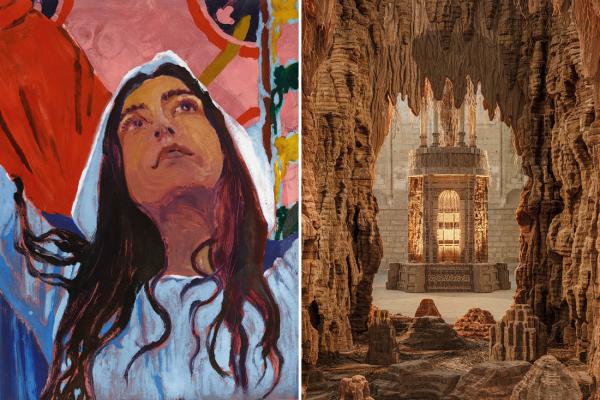Votre panier est vide
Besoin d'inspiration ?
Rendez-vous dans le programme en ligne du GrandPalais
Article -

Sacred art
In this context, art was constantly promoting transcendence, whether political, religious or social. It mainly served beliefs and rites, and enabled a dialogue to be established with divine forces. Functioning as a real intermediary and strictly codified, it adhered to the age-old laws which aimed to ensure the effectiveness (“menekh”) of works of art. For Egyptians, these works in effect always took on a very precise meaning and role. Most frequently, they had magical properties and could act as substitutes for humans or gods. Animated with a vital force, the sacred effigies in particular had the power to communicate with the gods. Artistic creations were often also part of the social structure, by contributing to the sanctity of politics – the enormous size of royal effigies, a celebration of the Pharaoh’s military exploits – and the glorification of the sacred – the splendour of religious architecture, the pomp of temples’ decoration.
An aesthetic reaching into eternity
Above all functional, Egyptian art is extremely transparent. It is characterized by simple shapes, colours generally applied in blocks, the use of a standardized symbolic vocabulary, standard postures (either face on or in profile) and symbolic variations in scale (height of characters corresponding to their importance). Although Egyptian civilization stretches over more than 3000 years, which saw several periods succeed one another, from the Thinite Period (from 3150 BC to 2700 BC) to the Roman and Byzantine Period (from 31 BC to AD 668) taking in the great period of the Empires (High, Middle and New Empire), the art it produced underwent relatively little change. That is because, being deeply rooted in its founding traditions, it did not depart from its original functions, which limited its autonomy and encouraged the longevity of forms, in line with its desire for eternity.
Votre panier est vide
Besoin d'inspiration ?
Rendez-vous dans le programme en ligne du GrandPalais
See content : In the fantastic world of Eva Jospin: 8 questions for the artist

Article -
At the Grand Palais, Eva Jospin's "Grottesco" exhibition offers a timeless journey. Mysterious caves, sculpted nymphaea, petrified forests and "embroidered tableaux" come together to form a world apart. In this interview, the artist reveals her sources of inspiration, her relationship with cardboard and embroidery, and the way she turns each viewer into an explorer of her fantastical landscapes.
See content : It's open! Eva Jospin and Claire Tabouret: two new exhibitions at the Grand Palais

Article -
Until March 15, you're invited to explore the fascinating worlds of Eva Jospin and Claire Tabouret, presented in two Grand Palais galleries linked by the same entrance.
See content : A treasure of the Sun King soon to be displayed under the glass roof of the Grand Palais: book your tickets now!

Manufacture de la Savonnerie d’après Charles Le Brun (1619-1690), Tête d’Apollon, détail du 6e tapis de la Grande Galerie du Louvre, laine et lin, 8,82 x 5,94. Paris, Mobilier national
Article -
Seven days only, some thirty carpets on display, a royal setting resurrected: enter the legend of the Sun King, under the majestic glass roof of the Grand Palais. Ticketing is now open!